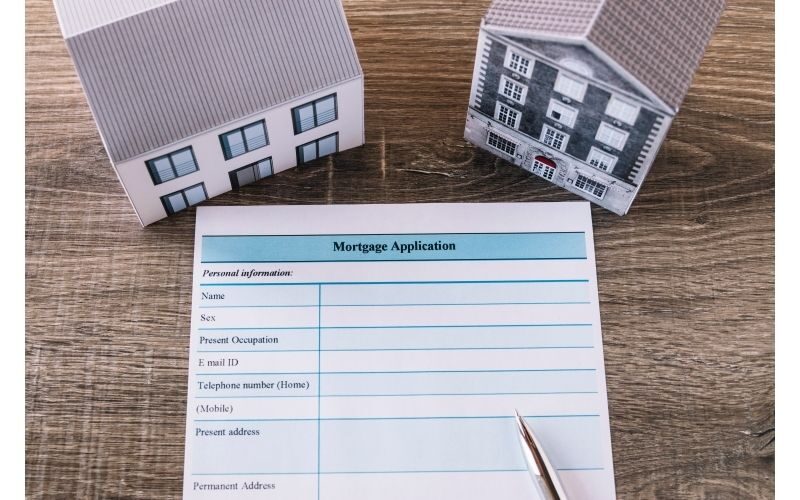Winter is typically when consumers reach for their credit cards the most. Holiday shopping, home improvement projects, and car repairs are all significant outlays for the average consumer. However, most people will not hesitate to charge it all on a high-interest credit card. “The rewards points make it worthwhile to pay with a credit card,” you may be thinking. An open-end mortgage loan could be a better option than a credit card. Keep reading as we define this open-end mortgage loan deed, explain how it works, and assist you in determining whether it is the right loan for your advance or future needs.
The average credit card interest rate, according to creditcards.com, is 17.21 percent. Unless you intend to pay off the entire balance at once, you could face hundreds, if not thousands, of dollars in interest per year. No rewards program can alleviate the pain of credit card debt.
What is an Open-End Mortgage?
An open-end mortgage is a type of mortgage loan deed that allows the borrower to increase the amount of outstanding mortgage principal in advance or at a future date. Borrowers with open-end mortgages can return to the lender and borrow more money. The additional amount that can be borrowed usually has a monetary limit.
How an Open-End Mortgage Works
A delayed draw term loan is similar to an open-end mortgage. It also has revolving credit-like features. Open-end mortgages are distinct in that they are loan agreements secured by a real estate property, with funds going solely toward investment in that property.
The application process is similar to that of other credit products, and the loan terms are determined by a borrower’s credit score and credit profile. Co-borrowers may have a better chance of getting an open-end mortgage if they have lower default risk.
An open-end mortgage can provide a borrower with a maximum principal amount that they can obtain over a specified or future period. The borrower can use a portion of the loan value approved to cover the costs of their home.
Because the borrower is only obligated to make interest payments on the outstanding balance, taking only a portion allows them to pay lower interest. The borrower is an open-end mortgage and can receive the loan principal at any time specified in the loan deed. The amount of credit available may also be linked to the value of the home.
Related Article: Hard Money vs Soft Money: What Is The Difference?
An open-end mortgage differs from a delayed draw term loan in that the borrower is not required to meet any specific milestones to receive additional funds. An open-end mortgage differs from revolving credit in that the funds are typically only available for a limited time. The terms of revolving credit stipulate that the funds remain open indefinitely, except a borrower’s default.
Drawdowns from available credit in an open-end mortgage can also only be used against secured collateral. As a result, payments must be directed toward the real estate property to which the lender has a title.
Benefits of an Open-End Mortgage
An open-end mortgage offers a lot of flexibility. It enables borrowers to withdraw cash from their home equity as needed. It is simpler to obtain cash from equity with an open-end mortgage than with a home equity loan, HELOC, or cash-out refinance. You can request additional funds with an open-end mortgage without having to re-qualify or pay closing costs, as you would with a second loan.
Furthermore, with an open-ended mortgage, you only pay interest on the amount borrowed. For example, if you take out a $300,000 mortgage and use $200,000 to purchase a home, you only pay interest on $200,000.
If you later tap the mortgage for another $50,000, you will begin paying principal and interest on the total amount. That is the $50,000 draw plus the initial loan balance of $200,000, less any payments made against the principal in the interim.
Another benefit of an open-end mortgage is that there is usually no penalty for repaying the mortgage before the due date. Traditional mortgages frequently have a fee or an early payment penalty.
Related Article: Mortgage Fell Through On Closing Day: What To Do?
You can borrow more money if you use your mortgage to borrow more money and then pay it back. You may do so as long as the borrowing period is still open, and the total amount borrowed does not exceed the property’s value.
The 2017 tax law restricted the deductibility of mortgage interest to loans used to pay for the purchase, construction, or substantial improvement of a home. Before assuming you can deduct interest on an open-end mortgage deed, consult with a tax professional.
Drawbacks of Open-End Mortgages
An open-end mortgage typically has a higher interest rate than a traditional mortgage. The interest rate on the initial loan amount can be fixed or variable. However, the interest rate on any new distributions you take is likely to fluctuate depending on market conditions. As a result, you may end up borrowing at a higher interest rate in the future.
Open-end mortgages may only allow you to take additional distributions for a set period, known as the “draw period.” Once the draw period has expired, the borrower will be unable to withdraw any more funds from the equity. A HELOC, on the other hand, has no such restriction.
Another disadvantage of an open-end mortgage versus a non-mortgage loan is that, like other mortgages such as home equity loans and HELOCs, your home serves as collateral. That means you could lose your home if you do not repay the loan.
Finally, the total amount borrowed, including the initial amount and any subsequent draws, cannot normally exceed the value of the home. This could become an issue if the value of your home falls in the future.
Example of an Open-End Mortgage
Assume a borrower obtains a $200,000 open-end mortgage to buy a house. The loan has a 30-year term and a fixed interest rate of 5.75 percent. They are given the right to the $200,000 principal amount, but they are not required to take it all at once. The borrower may choose to take $100,000, which would entail making 5.75 percent interest payments on the outstanding balance. The borrower may take another $50,000 five years later. The additional $50,000 is added to the outstanding principal at that time, and they begin paying 5.75 percent interest on the total outstanding balance. Use a mortgage calculator to help you budget for your monthly payment.
Is it right for you?
Many borrowers benefit from the flexibility provided by an open-end mortgages loan deed, or any HELOC for that matter. Whether you need money for medical bills, car repairs, home improvements, or other reasons; applying for an open-ended loan may be the best financial move you can make. If you don’t have an emergency savings account, this loan may come in handy.
Then there are the drawbacks of a fixed-rate mortgage loan. You are essentially putting your home on the line if you miss even one payment. Then there’s the possibility that you’ll end up underwater on your loan if the value of your home falls.
How to Apply for an Open-End Mortgage
Unless you inquire, your lender is unlikely to mention an open-end mortgage. If you do want an open-end mortgage, you must be able to qualify for a loan amount greater than the amount required to purchase the property.
Otherwise, you apply for a mortgage in the same way you would any other mortgage. You simply need a good credit history and a sufficient income to qualify for the larger loan amount.
Conclusion
People use open-end mortgages when they anticipate the need to borrow against equity in advance or at a future date to pay for other major upcoming expenses. Because they are secured by your home; they may be too risky to use to pay for vacations or other discretionary expenses.
However, if you have the credit history and financial strength to purchase a home without borrowing the entire purchase price, and you anticipate the need to borrow more in advance or the future; an open-end mortgage can be a good alternative to home equity loans and other forms of financing.
Frequently Asked Questions
What is an open-end loan?
An open-ended loan has no set expiration date. Lines of credit and credit cards are examples of open-ended loans. The terms of open-ended loans may be determined by a person’s credit score.
Is an open-end mortgage the same as a line of credit?
In contrast to a HELOC, which is a second lien on your home, an open-end mortgage requires only one mortgage. Furthermore, a HELOC allows you to access the credit line whenever you need it. An open-end mortgage may limit the amount of time you can withdraw funds.
What is the difference between a closed-end and open-end mortgage?
Closed-end loans are structured similarly to traditional mortgages, with all funds given at the loan signing and fixed monthly payments made to the lender. An open-end loan is set up with your lender as a line of credit. You can withdraw as much as you need from the line of credit, up to the maximum loan amount.
What is closed-end mortgage?
A closed-end loan is one that has a set loan date by which the debtor must repay the entire loan plus interest. This type of loan is typically disbursed all at once in order for the debtor to purchase or achieve a specific goal, and the creditor frequently acquires ownership of the item if the debtor fails to repay the loan.
Related Articles:






